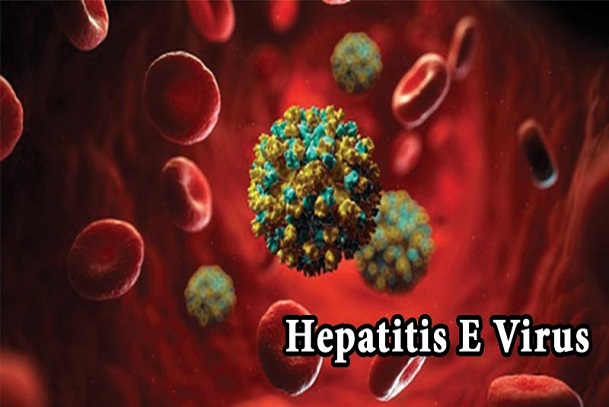 Wash your hands regularly and wear a face mask.
Learn more
Wash your hands regularly and wear a face mask.
Learn more

HEPATITIS E
Hepatitis E is a liver disease that is caused by the hepatitis E virus (HEV), thus potentially causing swells and damages to the liver. In some people, this can lead to serious complications.
Just like the hepatitis A virus, the hepatitis E is spread by the fecally contaminated water i.e. stools of infected persons, within endemic areas or consumption of uncooked or undercooked meat (especially the contaminated ones); causing outbreaks in most developing countries. Hepatitis A is a self – limiting i.e. most individuals with hepatitis E gets better within weeks or months, though it doesn’t lead to long term illness or liver damage like other type of hepatitis yet it can be highly dangerous for pregnant women or individuals with weak immune systems (including elderly persons).
The virus has 4 different types: genotypes 1, 2, 3 and 4. Genotypes 1 and 2 have been found only in humans while genotypes 3 and 4 circulate in several animals (including pigs, wild boars, and deer) and thus causing diseases and occasionally infecting humans.
According to World Health Organisation, there is an estimated case of 20 million HEV infections worldwide, leading to an estimated 3.3 million symptomatic cases of hepatitis E. In 2015, hepatitis E caused approximately 44, 000 deaths (accounting for 3.3% of the mortality due to viral hepatitis).
Transmission of Hepatitis E
The hepatitis E virus is mainly transmitted through the faeces of an infected person to fecal contamination of drinking water. This is common in areas where poor environmental sanitation is practiced, also lacks good drinkable water. Other cases of transmission have been recorded but they are quite rare and accounts for limited number of clinical cases found among people. And they include:
Geographical Distribution of Hepatitis E
According to data gotten from W.H.O, hepatitis E infection is found globally in which two different patterns are observed and found in:
The disease is common in low- and middle-income countries with limited access to essential water, sanitation, hygiene and health services. In these areas, the disease occurs both as outbreaks and as sporadic cases. The outbreaks usually follow periods of fecal contamination of drinking water supplies and may affect several hundred to several thousand persons. Some of these outbreaks have occurred in areas of conflict and humanitarian emergencies, such as war zones, and in camps for refugees or internally displaced populations, situations where sanitation and safe water supply pose special challenges.
Sporadic cases are also believed to be related to contamination of water, albeit at a smaller scale. The cases in these areas are caused mostly by infection with genotype 1 virus, and much less frequently by genotype 2 virus.
In areas with better sanitation and water supply, hepatitis E disease is infrequent, with only occasional sporadic cases. Most of these cases are caused by genotype 3 virus, and are triggered by infection with virus originating in animals, usually through ingestion of undercooked animal meat (including animal liver, particularly pork), and are not related to contamination of water or other foods.
Serological evidence of prior infection with the virus has been found in most areas, with higher seroprevalence rates (proportion of people who test positive for antibodies to HEV) in Asia and Africa. However, presence of these antibodies does not imply presence of or increased risk of disease. The usefulness of such data for epidemiological purposes may also be limited due to variable and possible sub-optimal performance of available serological assays, and possible disappearance of the antibody with the passage of time among those exposed to the virus.
Symptoms of Hepatitis E
The incubation period following exposure to HEV ranges from 2 to 10 weeks, with an average of 5 to 6 weeks. The infected persons excrete the virus beginning from a few days before to 3-4 weeks after onset of the disease.
In areas with high disease endemicity, symptomatic infection is most common in young adults aged 15–40 years. In these areas, although infection does occur in children, they often have either no symptoms or only a mild illness without jaundice which goes undiagnosed.
Typical signs and symptoms of hepatitis include:
Treatment of Hepatitis E
At the moment there are no specific treatments required for hepatitis E, and because the disease is self – limiting, there isn’t any need for hospitalization or unnecessary medications. Apart from keep good personal hygiene, the following can also be adopted:
Prevention of Hepatitis E
According to W.H.O, prevention is the most effective approach against the disease. At the population level, transmission of HEV and hepatitis E disease can be reduced by:
On an individual level, infection risk can be reduced by:
In 2011, a recombinant subunit vaccine to prevent hepatitis E virus infection was registered in China. It has not yet been approved in other countries.